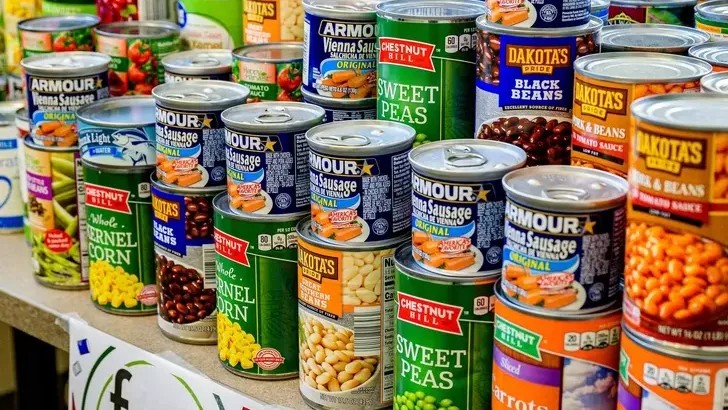Canned Tomatoes – The Foundation of Flavor

Walk into any professional kitchen and you’ll find stacks of canned tomatoes, and there’s a very good reason for this obsession. Almost every meal we make seems to start with a can of tomatoes. We use them in everything, from our Easy Chicken Tortilla Soup, to Crock-Pot Paleo Chili to Tikka Masala Soup – they add an irreplaceable sweet, pungent flavor to a huge array of dishes. The beauty of canned tomatoes lies in their consistency – they’re picked at peak ripeness and processed immediately, ensuring reliable flavor year-round.
Whether you choose whole, diced, crushed, or paste, each variety serves a specific culinary purpose. Diced, crushed, whole, sauce, paste – however you prefer ’em, canned tomatoes can come in handy. Professional chefs know that keeping the juice from your canned tomatoes is crucial, as it contains concentrated umami compounds that enhance whatever you’re cooking. And, since fresh tomato season typically runs from June through September, canned tomatoes are what we lean on the rest of the year.
Beans – The Protein Powerhouse

From black beans to chickpeas, canned legumes represent one of the hardest-working ingredients in any chef’s arsenal. Canned beans are such a kitchen workhorse. They bulk up soups and stews, they add tons of fiber and protein to everything from salads, like this hearty Southwest Cobb Salad to dips like our Sweet and Smokey Bean and Corn Dip. The convenience factor cannot be overstated – while dried beans require overnight soaking and hours of cooking, canned varieties deliver the same nutritional benefits in seconds.
Smart chefs understand that the liquid in canned beans shouldn’t automatically go down the drain. For example, don’t necessarily always hold true to that “rinse your beans” rule. If you’re watching your sodium, sure, rinse and drain the liquid from your can of beans. If, though, your dish needs a little extra liquid and some starch, keep that liquid and use it. This starchy, protein-rich liquid can thicken soups, enhance pasta sauces, and add body to countless dishes.
Coconut Milk – The Creamy Game-Changer

Professional kitchens have embraced coconut milk as more than just an ingredient for curries. I ALWAYS have in the cupboard. That means I can make this soup at a moment’s notice. This pantry staple offers richness and depth that transforms simple ingredients into luxurious dishes. The high fat content creates velvety textures in everything from soups to pasta sauces, making it invaluable for both dairy-free cooking and adding complexity to traditional recipes.
Chefs appreciate coconut milk’s versatility across different cuisines. It works equally well in Thai curries, creamy tomato soups, and even desserts. Its creaminess comes from coconut milk rather than dairy. The shelf-stable nature means it’s always ready when inspiration strikes, and unlike dairy cream, it won’t curdle in acidic dishes. Professional cooks often reach for the full-fat versions for maximum richness and flavor impact.
Quality Fish and Seafood – The Umami Heroes

Canned anchovies have so many uses that they’re even one of the essential ingredients some celebrity chefs . These tiny fish pack an enormous flavor punch that goes far beyond Caesar salads. Canned anchovies are a staple in Italian cooking – think of puttanesca, a tomato-based sauce that features anchovies, olives and capers, or bagna càuda, an anchovy-infused dipping sauce typically paired with raw or cooked vegetables. Professional chefs understand that anchovies dissolve into dishes, adding depth without fishiness.
Beyond anchovies, quality canned tuna and salmon have earned respect in professional kitchens. Packed with heart-healthy omega-3 fatty acids and with a rich, juicy texture, canned salmon offers a more luxurious option. When you’re looking for a solid, albeit basic, canned tuna that you can keep on hand in your pantry for easy meals and snacks, look no further than Trader Joe’s Solid White Albacore Tuna in Olive Oil. These proteins offer endless possibilities, from elegant pasta dishes to sophisticated appetizers that rival fresh preparations.
Chipotle Peppers in Adobo – The Smoky Secret Weapon

Canned chilies in adobo may not be something that your mom or grandma considered to be a pantry staple – or, then again, maybe she did! – but we reach for this smokey, preserved chili over and over again to add spicy and bright richness to meals of all kinds. These smoked jalapeños pack complexity that’s impossible to replicate with fresh peppers. Chilies in adobo sauce are smoked, dried jalapeños that have been canned in an ultra-flavorful purée of tomato, vinegar, garlic, and some other spices. They have some heat for sure, but they’re also a little sweet, a lot smokey, and super savory. Big, big flavor in a teeny, tiny can.
Professional chefs appreciate how these peppers transform ordinary dishes into extraordinary ones. The adobo sauce itself is equally valuable, adding instant depth to marinades, sauces, and braises. The adobo sauce makes our Turkey Pumpkin Chili rich and delicious, and they are the secret ingredient in our Easy Baked Chicken Quesadillas. A single can can enhance dozens of meals, making it one of the most cost-effective flavor enhancers in the pantry. The smoky heat works across cuisines, from Mexican-inspired dishes to fusion creations that push culinary boundaries.
These five canned staples prove that sophisticated cooking doesn’t always require fresh, expensive ingredients. Professional chefs understand that the best pantry is one that’s strategically stocked with versatile, high-quality basics that can transform simple meals into memorable experiences. The next time you’re building your grocery list, remember that these humble cans contain the same flavor-building potential that professional kitchens rely on every single day.








